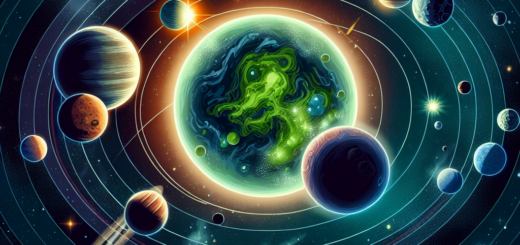The Science of the Habitable Zone: How Researchers are Identifying Potentially Hospitable Planets
In the vast expanse of the universe, the search for potentially habitable planets has long been a primary focus of astronomers and researchers. The concept of a habitable zone, also known as the Goldilocks zone, refers to the region around a star where conditions are just right for liquid water to exist on a planet’s surface. This is seen as a key indicator for the potential of life to exist on a planet.
Identifying planets within the habitable zone of a star is a complex and challenging task. Researchers use a variety of methods and tools to search for these elusive worlds, including space telescopes, ground-based observatories, and computer simulations. One of the most common methods used is the transit method, where astronomers look for slight dips in a star’s brightness as a planet passes in front of it.
In recent years, advancements in technology and research methods have led to the discovery of a growing number of exoplanets within the habitable zone of their host stars. These planets, known as “Earth-like” or “potentially habitable,” are of particular interest to scientists as they may offer clues about the potential for life beyond our own planet.
One such discovery that generated excitement within the scientific community was the identification of Proxima b, an Earth-sized exoplanet orbiting Proxima Centauri, the closest star to our own sun. While the planet is located within the habitable zone of its star, researchers caution that many factors must be considered when determining a planet’s potential for habitability, including its atmosphere, temperature, and proximity to its host star.
Researchers are also exploring the concept of “superhabitable” planets, which are planets that may offer even more favorable conditions for life than Earth. These planets may have a thicker atmosphere, higher surface temperatures, and a more stable climate than our own planet, making them potentially ideal for supporting life.
As our understanding of the habitable zone and exoplanets continues to evolve, researchers are increasingly turning their attention to the search for signs of life on these distant worlds. Future missions, such as the James Webb Space Telescope and the upcoming launch of the James Webb Space Telescope, are expected to provide new insights into the potential habitability of exoplanets and may bring us closer to answering the age-old question of whether we are alone in the universe.
In conclusion, the science of the habitable zone is a fascinating and rapidly evolving field of research that holds the promise of unlocking the mysteries of the cosmos. By identifying potentially hospitable planets and exploring their potential for life, researchers are paving the way for new discoveries that may forever change our understanding of the universe and our place within it.













